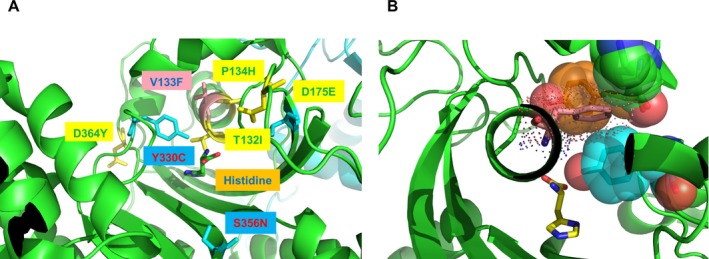Figure 3.

(A–B) Location of the peripheral neuropathy‐associated substitution V133F in the active site of human histidyl‐tRNA synthetase (HARS). Histidyl‐tRNA synthetase (PDB 4PHC) is shown as a dimer in ribbon cartoon representation with the first monomer in green and the second monomer in cyan. Neuropathy‐associated HARS residues are shown in the 3D structure in stick representation where substitutions reported in Brozkova et al. are shown in yellow, those reported in Abbott et al. are shown in cyan, and the substitution reported here is shown in salmon2, 11 (A). Modeling of the p.Val133Phe (V133F) substitution (van der Waals radius in dot representation) indicates steric clash with Tyr107, Lys106, and Tyr330, all depicted in CPK space filling representation. Note that Y330C is one of the substitutions associated with Charcot–Marie tooth syndrome, as described in Abbott et al..2 In this modeling depiction, the resulting structure was not subjected to energy minimization, which would likely produce local side chain rearrangements (B).
